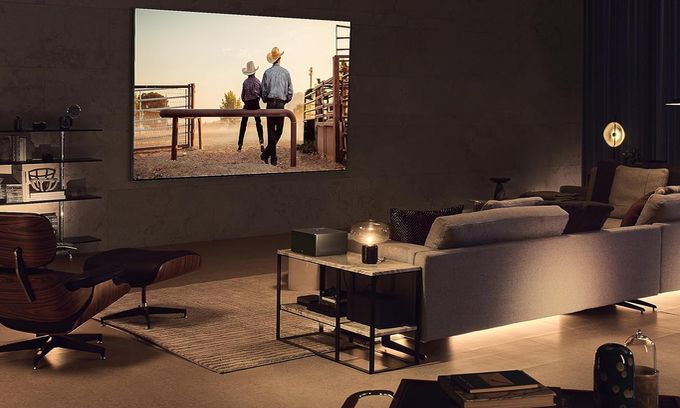Without a doubt, LG Signature OLED Evo M3 became one of the innovative sensations at CES 2023. This series is the first to use wireless streaming of video content via the external A/V Zero Connect Box. It transmits the signal to the receiver, which is located at the bottom center under the screen frame.

This solution can be positioned as a development of the Samsung’s One Connect box concept. Indeed, modern TVs have long turned into an intelligent entertainment center that can use LAN, IR Blaster, coaxial cable, USB and HDMI ports, etc. Of course, wiring harness creates an aesthetic and organizational problem, and the One Connect Box solves it successfully. LG took the next step by increasing the distance between TV and Zero Connect Box up to 30 ft (~9 meters) with wireless video content transmission. Of course, this has significantly expanded the choice of TV placement.

In January, the developers promised the availability of the new series this year and fulfilled their promise by launching the LG OLED Evo M3 on sale in the fall.
The series includes 77″, 83″ and 97″ models. Quite predictably, the South Korean miracle is quite expensive, but with the exception of the huge 97″ TV, they are affordable:
– LG OLED77M3PUA (77-inch) – ($ 4,500 – $ 5,000) / £ 6,000 (in UK);
-‘- OLED83M3PUA (83-inch) – ($ 6,250 – $ 8,000) / £ 8,000;
-‘- OLED97M3PUA (97-inch) – $ 30,000 / £ 28,000.
Their specs, functionality and image quality are close to the flagship LG OLED Evo G3 series, priced at ~$ 3,600 and $ 5,000 for 77″ and 83″ TVs, respectively.
M3 Key Features
In principle, the M3 can be positioned as a version of the flagship G3 with innovative wireless transmission of video/audio content via an additional Zero Connect Box. In fact, the series differ only in model ranges and prices (M3 vs G3):
– 97″ / 83″ / 77″ (~ $ 30,000 / $ 7,500 / $ 4,500) vs 83″ / 77″ /65″ / 55″ (~ $ 5,000 / $ 3,600 / $ 2,300 / $ 2,000) – company website.
Other components, functionality and specs are identical:
– ‘infinite’ OLED contrast with ideal black.
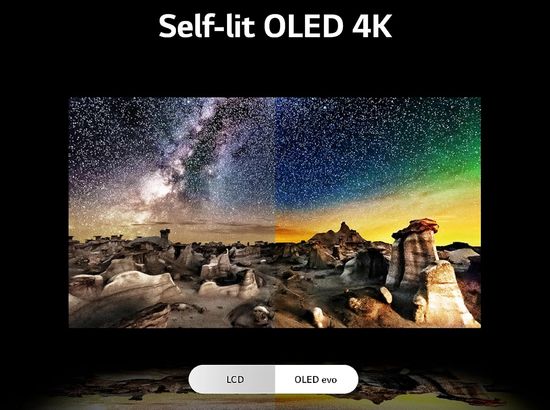
– webOS 23 OS;
– α9 AI Processor Gen6 picture processor (AI Picture Pro);
– 4K Ultra HD (3,840 x 2,160) resolution and 120Hz native frame rate;
– HDR support – Dolby Vision, HDR10 and HLG.
As known, all LG TVs traditionally support Dolby Vision instead of HDR10+. To be fair, they are equally effective for HDR content, but HDR10+ supports only 10-bit color, while Dolby offers 12-bit encoding;
– OLED Motion interpolation and AI Super Upscaling 4K;
– sound – AI Sound Pro (Virtual 9.1.2 Up-mix), bluetooth, surround ready, Dolby Atmos, 60W 4.2ch speaker system.
The sound quality may not be ideal for audiophiles, but most people with normal hearing can save money on a soundbar;
– certified Wi-Fi 6E;
– Dolby Vision IQ, Filmmaker Mode and Next Picks support;
– very wide viewing angles.
Gaming
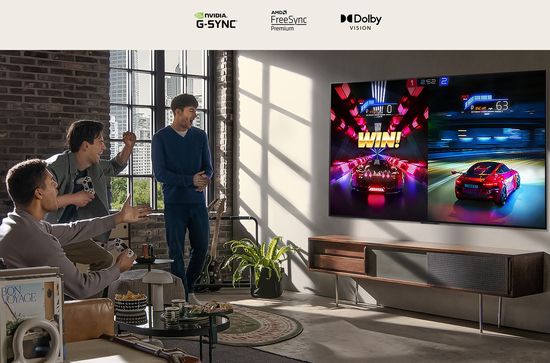
– ALLM (Auto Low Latency Mode);
– VRR (Variable Refresh Rate);
– Cloud Gaming – Nvidia GeForce Now, Utomik;
– FreeSync, G-SYNC Compatible;
– LG Game Optimizer and HgiG;
– 4K@120Hz;
– Response Time < 0.1 ms.
LG M3 comparison
Of course, a side-by-side comparison shows some differences between the LG series and their main competitors, including flagship Samsung and Sony models with hybrid OLED-QD panels. Considering prices and picture quality, this list includes a new Samsung S95C (77″ / ~ $ 3,600) and last year’s Sony XR-65A95K (65″ / ~ $ 3,000).
LG OLED evo M3 vs G3 vs C3 vs Samsung S95C vs Sony XR-65A95K:
– SDR / HDR Brightness (nits or cd/m², Filmmaker Mode with a 10% window) – 333 / 1390 vs 325 / 1360 vs 240 / 820 vs 250 / 1370 vs 300 / 990.
As known, M3 and G3 have the ‘Brightness Booster Max’ feature. It increases brightness by approximately 70% with optimizing its intensity at the pixel level.
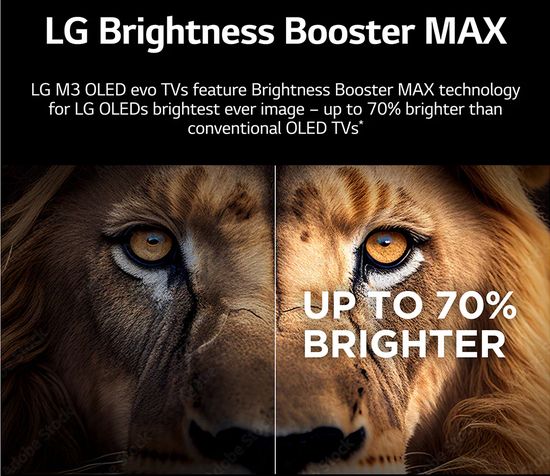
As a result, in small areas in Vivid mode, the M3’s peak brightness can reach a phenomenal 1,900 nits for an OLED panel, delivering superb HDR performance. Unfortunately, the function is only available in models with a large diagonal;
– Delta-E ‘out of the box’ – 2.1 vs 1.8 vs 1.4 vs 1.45 vs 3.3.
Except Sony, all TVs have superb Delta-E ‘out of the box’ (Delta-E < 3 is good);
– Color Gamut (Rec. 709 / DCI-P3 / Rec. 2020) – 99.5 / 95.5 / 71.7 vs 99.7 / 96.7 / 71.7 vs 99.1 / 99 / 73.7 vs 98.7 / 99 / 74.7 vs 110.8 / 100 / 89.
South Korean Samsung and LG models are almost identical and significantly inferior to the Japanese competitor;
– Input Lag (ms) – 10.5 (Game Optimizer boost function) vs 9 vs 9 vs 9 vs 16.
For reference, the best gaming TVs have sub-10ms.
LG M3 specs
LG OLED evo M3 has only the under-the-IR-receiver button for Power, Input, Volume, and Channel commands. All the traditional ports are located in the Zero Connect Box, which measures 9.4 x 9.2 x 4.6 inches.

Its design is similar to Samsung The Frame and can be positioned as artwork.
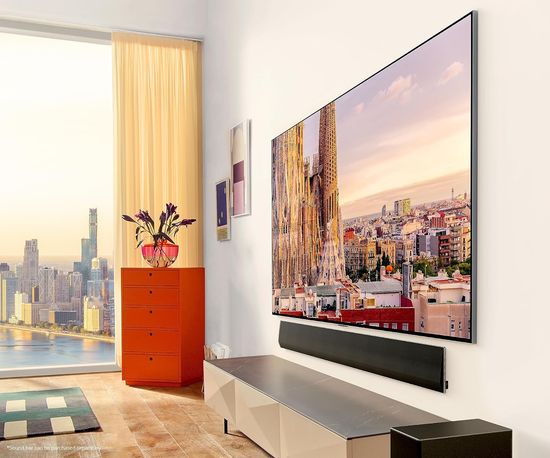
For wall mounting it uses 300x300mm VESA holes.
For stable communication, the company offers place the Zero Connect Box directly below the screen, to its side, or in front.
The mutual matching the TV’s wireless receiver with box is carried out using adjustable antenna on the TV’s top. In principle, the process is not difficult, but it does require some time and possibly several attempts. But after setup, the system works flawlessly.
Of course, wireless transmission expands the placement choice of the box. But the cables length of other devices that connect via LAN, IR Blaster, coaxial cable, USB, RS-232C (for service), S/PDIF optical audio out, and HDMI ports significantly limits this bonus. In fact, their use requires placing a box near the viewing area.
Moreover, any obstacle between box and TV blocks the transmission. This manifests itself as a ‘freeze’ in the image a few seconds after its appears.
The new WebOS 23 version contains links to sensible groupings of apps, including Home Office, Game, Music, Home Hub and Sports, or a Tips screen.
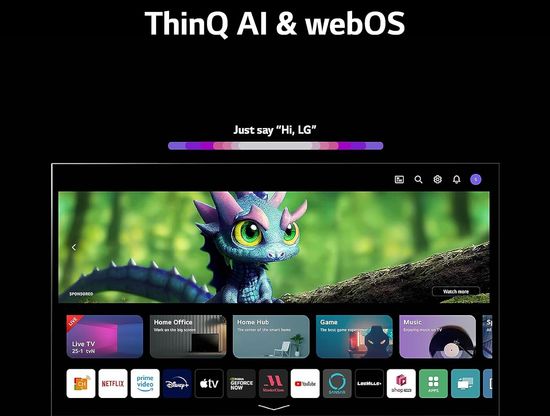
Model has integrated the Amazon Alexa and Hey Google digital assistants, supports LG’s ThinQ smart home ecosystem, Apple AirPlay2 and Apple Home. In addition, the built-in ATSC 3.0 turner can receive over-the-air 4K broadcasts.
By analogy with Samsung TV Plus and Sony Bravia Core, LG has created a proprietary LG Channels streaming platform.
Conclusion
Pros:
– innovative wireless TV technology;
– bright OLED Evo panel with ‘infinite’ contrast;
– 4K@120Hz support;
– superb sound;
– antenna on the TV top simplifies the Zero Connect Box installation;
– wall mounting without gaps;
– ATSC 3.0 tuner.
Cons:
– high price;
– difficult connection of the power cable due to the panel fitting too tightly to the wall;
– too large remote;
– no HDR10+ support;
– wireless transmission requires line of sight, limiting the location choice of box;
– Zero Connect Box placement only directly below the screen or in front.
MiniLED backlit has become the main innovation of 2021. Hybrid OLED-QD panel in Samsung S95B / S90B and Sony A95K picked up the batont in 2022. LG OLED Evo M3 with Zero Connect Box topped the list of innovation leaders in 2023.
In fact, any innovative models are designed to test new concepts and do not claim to be a marketing success due to the high price. The South Korean giant managed to perfect this trend. With the exception of the 97″ LG M3 priced at $ 30,000, 83″ and 77″ TVs cost $ 7,500 / $ 4,500 and are quite affordable. For comparison, the price of the flagship 83″ and 77″ LG G3 reaches $ 5,000 / $ 3,600. Of course, the difference is also significant, but many progressives may consider it quite adequate.
In general, the image quality, specs and functionality of the LG M3 are fully consistent with the flagship premium level. In fact, it’s a more expensive G3 version with wireless A/V signal transmission.
This video introduces LG OLED evo M series.
